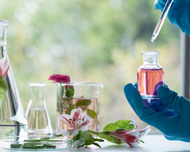Is the Fragrance Industry Heading Towards Clean Beauty Standards?
Posted by MAIR on Aug 22nd 2021
Full transparency in beauty ingredients is becoming the norm in skincare and cosmetics, but brands and retailers are their own police for ingredient safety regarding fine fragrances. But is the need for clean ingredients being driven by consumers? To put it in perspective, the U.S. Food and Drug Administration has only banned 38 ingredients compared to the European Commission’s ban on 1,300 ingredients. What’s driving clean beauty standards are the consumers.
But what does clean beauty mean to perfumers? Is it the lack of synthetics? Is it only natural ingredients? Or is it revealing what is in the formula? Unfortunately, the definition of clean beauty is whatever the brand says it is. When creating a new fragrance, perfumers have up to 3,000 ingredients to work with. Roughly 10% are clean certified. The good news? That number is growing.

Historically, the mystery of what’s in perfume was what drew consumers to a fragrance. Now, fragrance brands are witnessing an evolution of their consumers wanting to know more about the scent before they buy.
It’s not just a marketing ploy; the fragrance industry is definitely headed towards a cleaner, more transparent avenue, but not fast. Market analysts and industry advisors have gone on record saying the clean movement and transformation will happen over the next 10 years.
So why aren’t brands rushing towards the clean revolution? At the end of the day brands, (especially the larger ones) follow the money. In the U.S., sales in the clean category account for less than 1 percent of the overall $4.5 billion fragrance market, and unsurprisingly, it's the new, niche brands that are driving that 1 percent.

